
A0S01 – Semba at a Glance
Semba, the financial heart of Osaka Semba is said to have been where the worke …
中央区の歴史をパネルにしてみました。江戸時代絵図から現代の写真まで、歴史ある中央区のを絵と写真で解説。
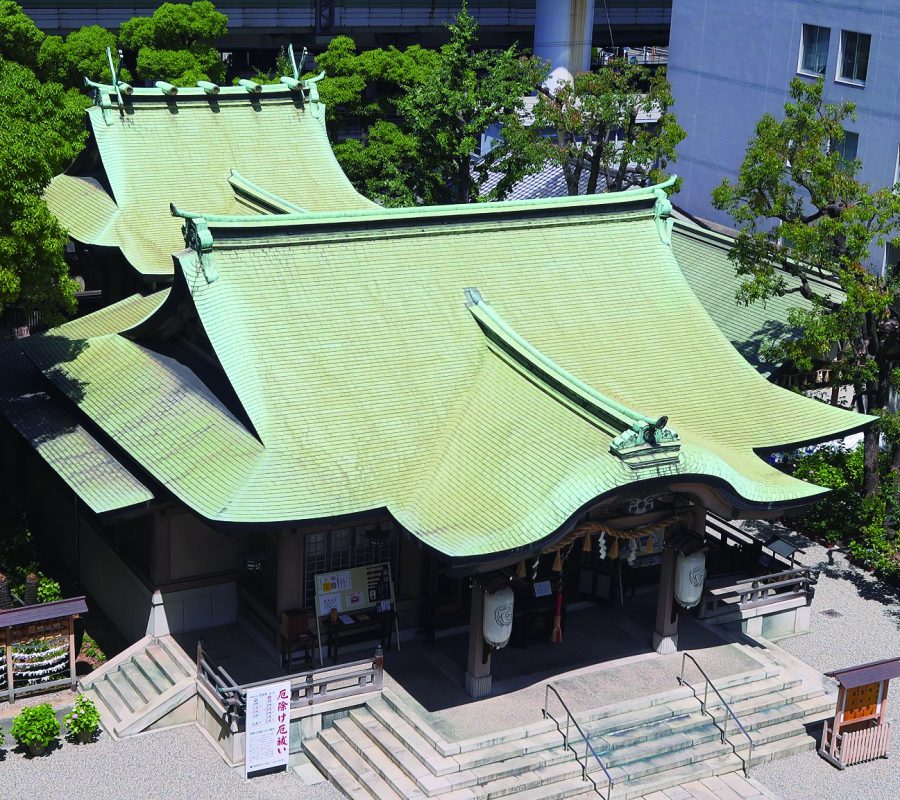
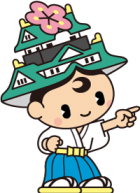
Right as Osaka Castle was built, many temples and shrines were also relocated. Toyotomi Hideyoshi, also known as “Taiko-san” (retired regent), had various shrines and temples relocated in order to further strengthen the area around Osaka Castle.
Ikasuri Shrine, relocated from Watanabe-no-Tsu in Hachikenya (now around Kokumachi in Chuo Ward) on the south bank of the Okawa River to its current location in Chuo Ward’s Kyutaromachi in 1582, is said to be the birthplace of Kamigata Rakugo theater. Even today there are theater and Rakugo performances, and every year in autumn during the Semba Festival, a dedication of opera and music known as the Semba Chinju no Mori Art & Music Festival.
Countless forms of performing arts and literature have been created and nourished here in Semba since the Edo period (1603-1867). Even today, many famous sites and places that are important to the histories of Bunraku, Kabuki, haiku, and theater, can be found in Semba, and you can enjoy tracing their footsteps.
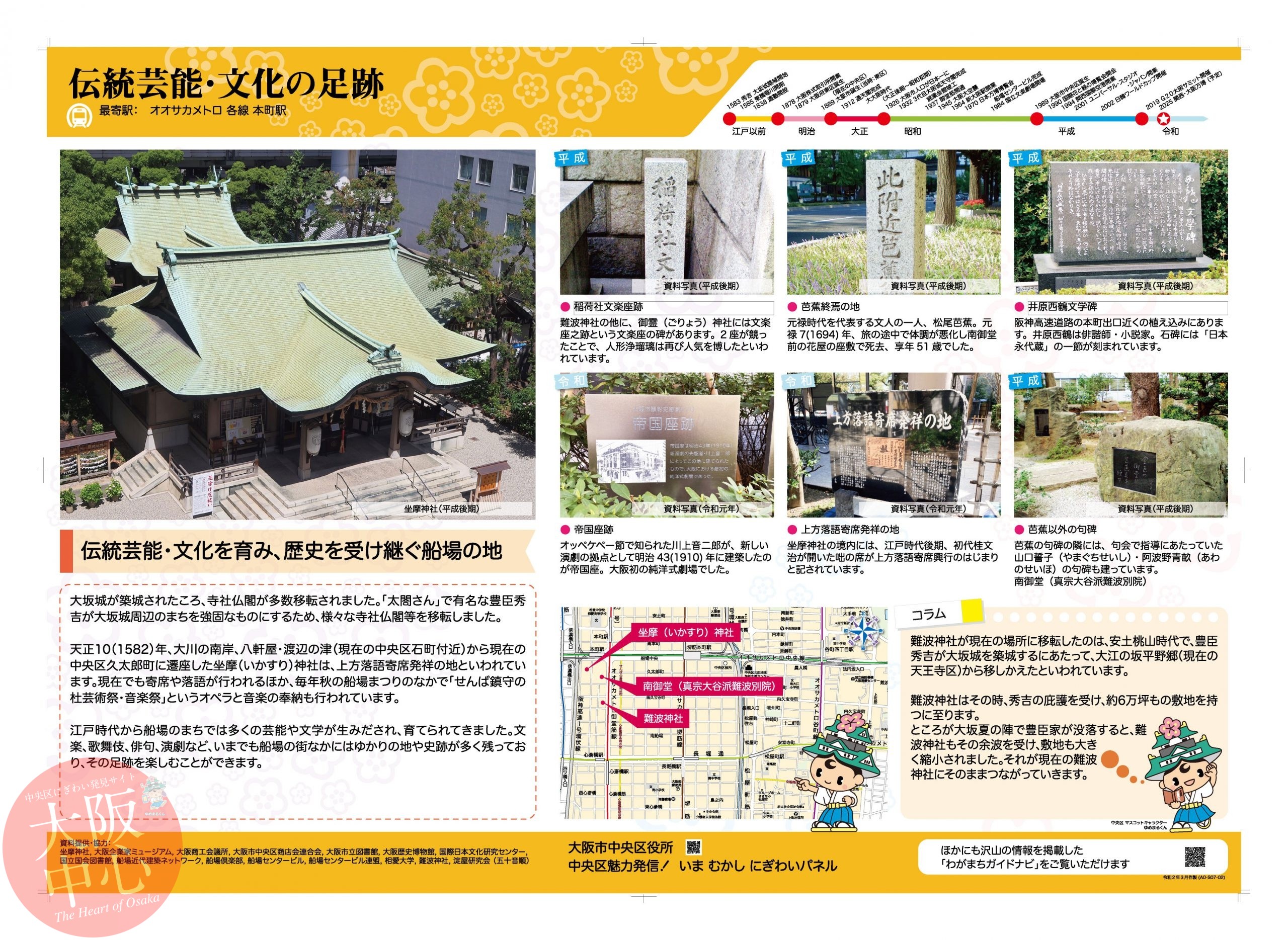
It is said that Namba Shrine moved to its current location during the Azuchi-Momoyama period (1573-1600) from Oenosaka Hiranogo (now Tennoji Ward) upon Toyotomi Hideyoshi’s construction of Osaka Castle.
At the time, Namba Shrine received the patronage of Hideyoshi and had a sprawling area of roughly 200,000 square meters.
However, after the Toyotomi clan fell at the Summer War of Osaka in 1615, the Shrine was also affected in the aftermath and the size of its land was greatly reduced. This smaller area is the land upon which Namba Shrine stands today.
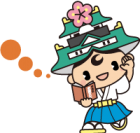

Semba, the financial heart of Osaka Semba is said to have been where the worke …
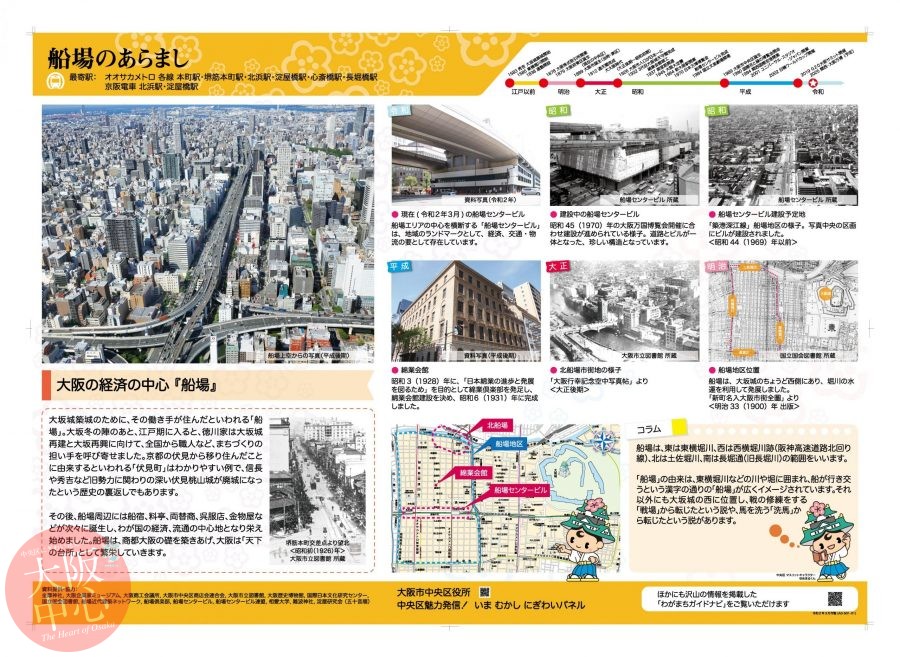
The history of the merchant Yodoya and Yodoyabashi Bridge Yodoyabashi Bridge, …
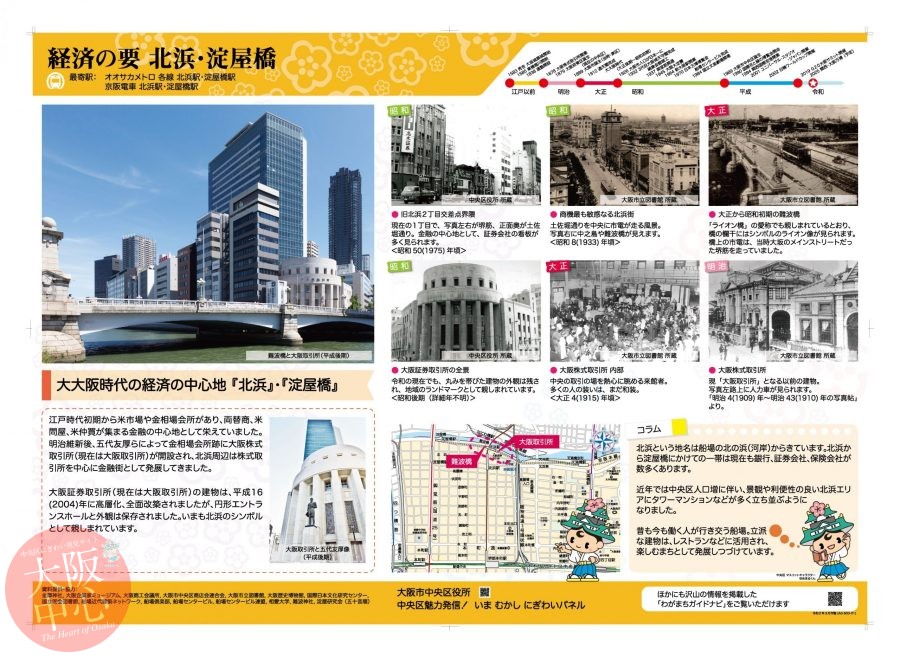
Kitahama and Yodoyabashi were the economic center during the Dai-Osaka (Great …
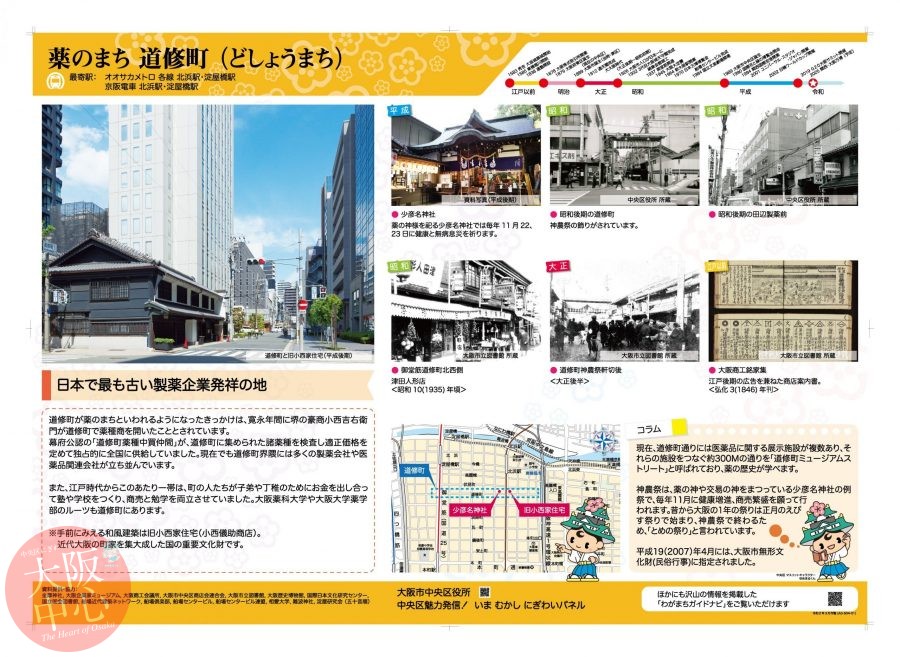
Birthplace of Japan’s oldest pharmaceutical company It is said that Doshomachi …

Semba Center Building and the wholesale district The Semba area, which centers …
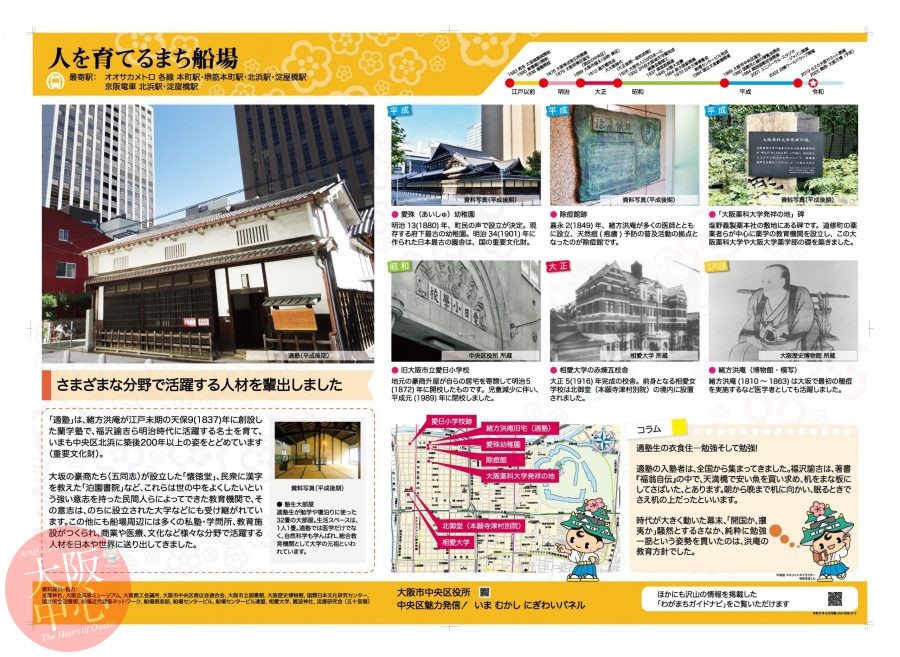
Developing a workforce that contributes to various fields Tekijuku is a Rangak …
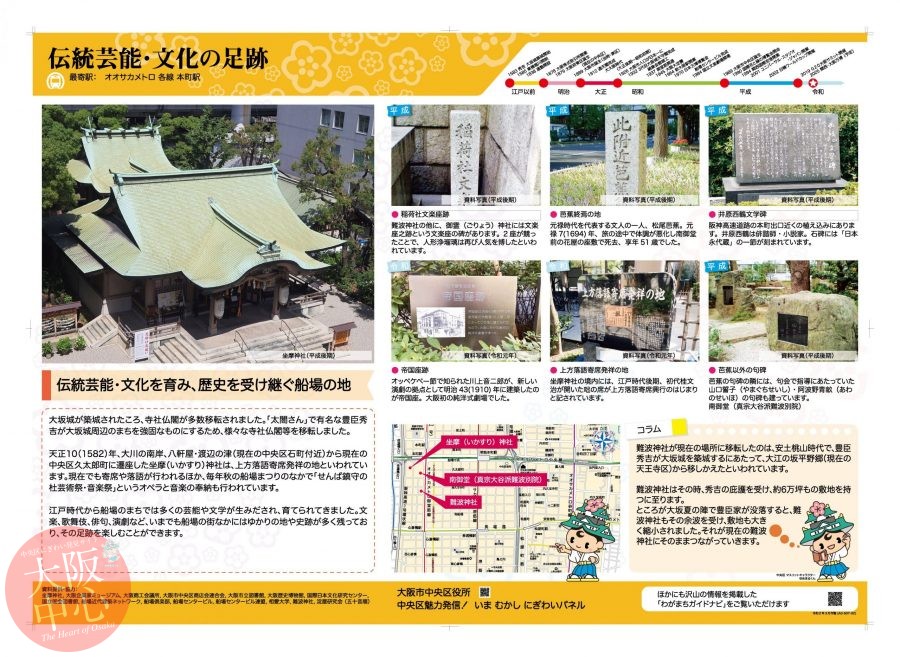
Semba, embracing traditional performing arts and culture and inheriting histor …
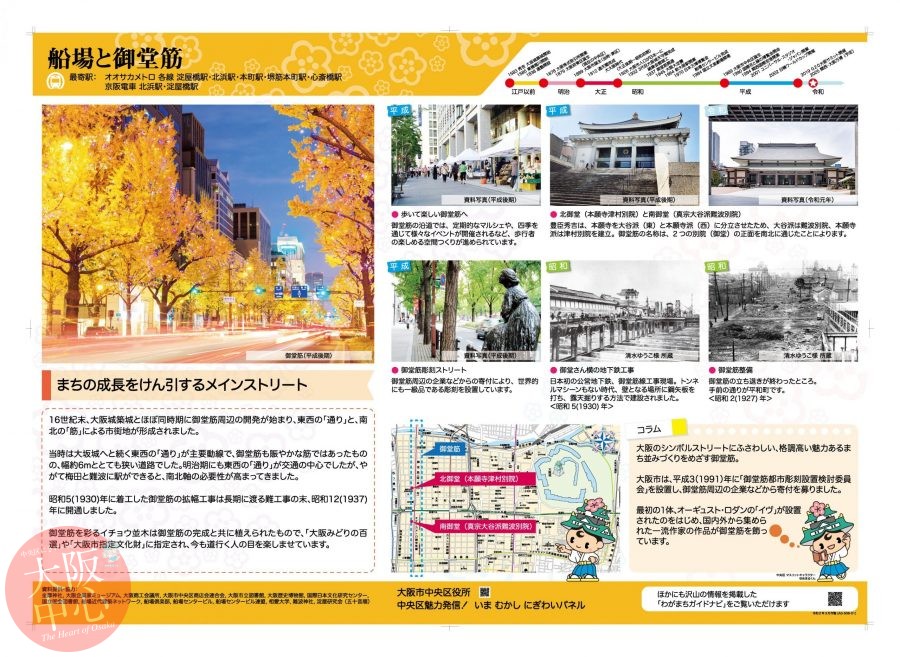
The city’s main street, leading the way to prosperity At the end of the 16th c …
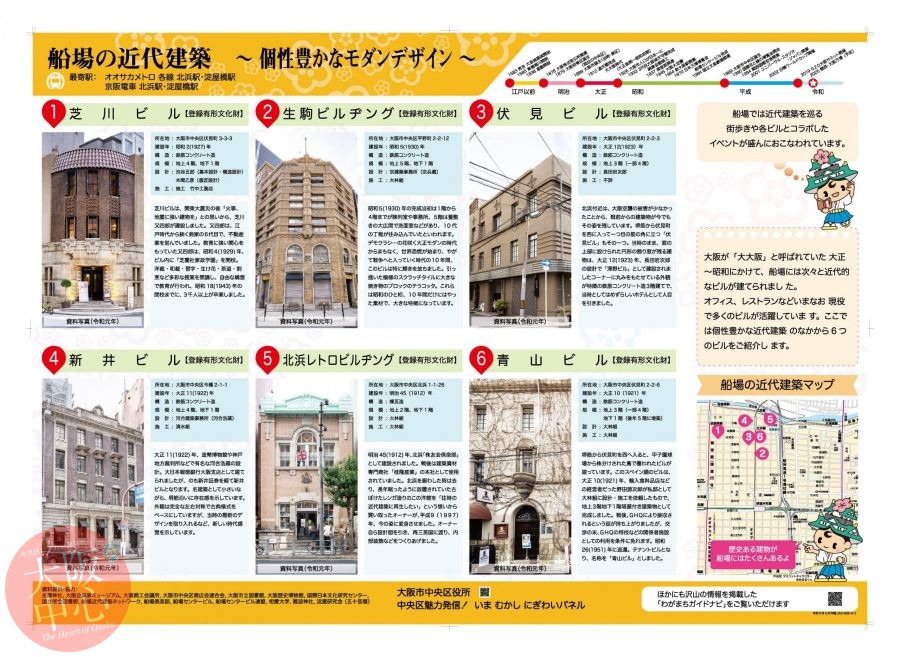
Shibakawa Building (registered as a Tangible Cultural Property) The Shibakawa …
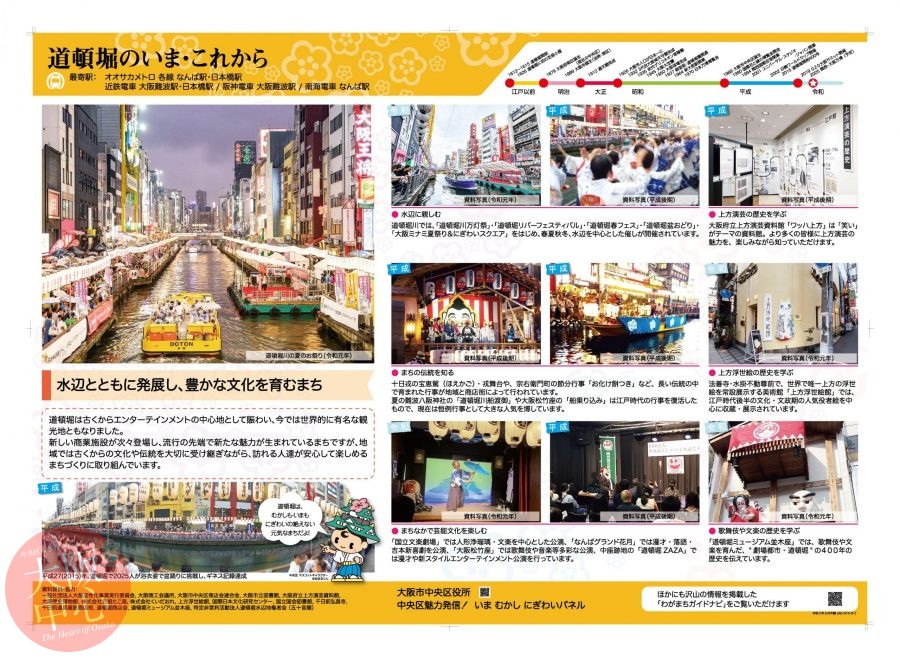
Looking to the future as we inherit and pass on tradition and culture. Semba h …